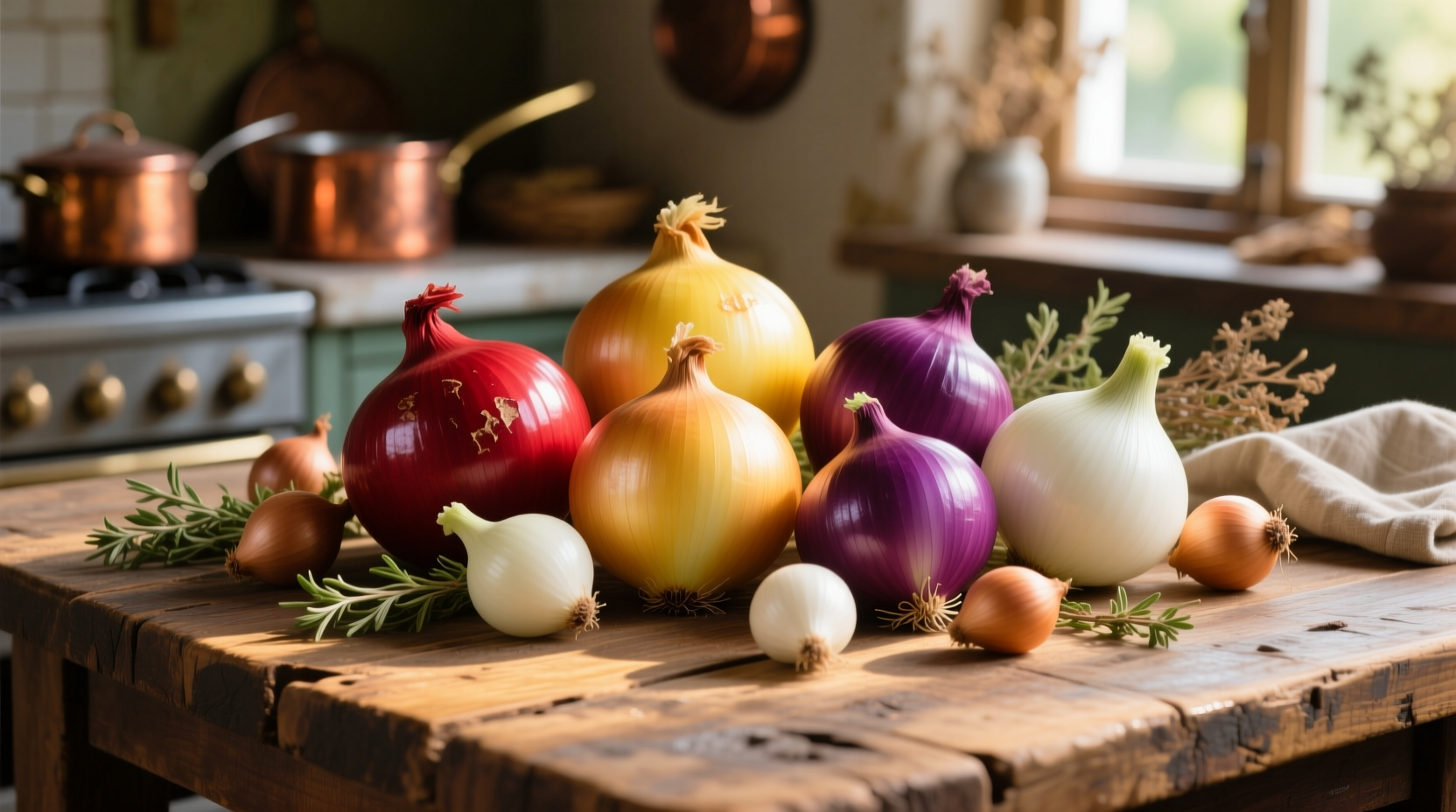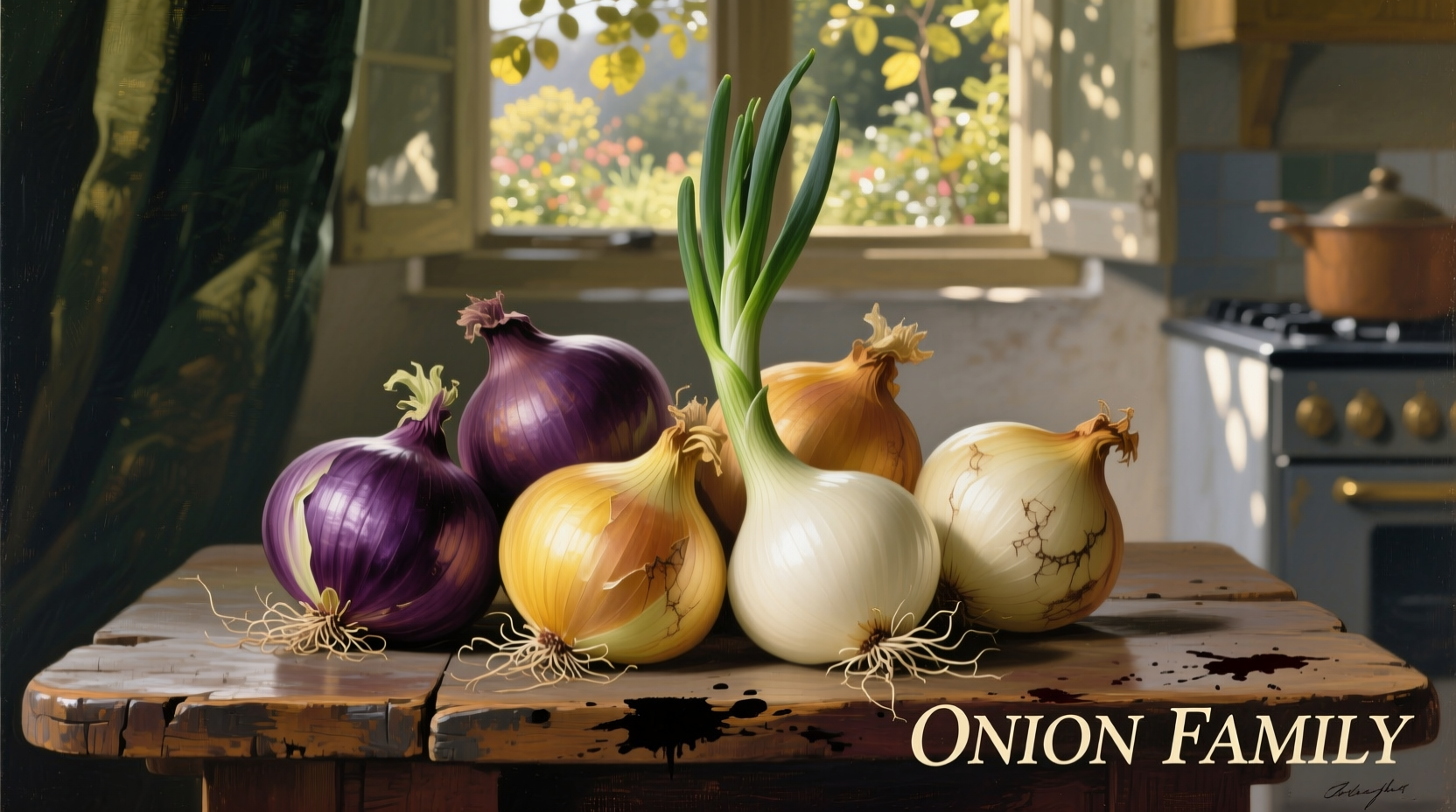Botanical Foundations of the Allium Genus
Members of the onion family belong to the Allium genus within the Amaryllidaceae family, characterized by their distinctive layered bulbs and pungent sulfur compounds. These plants evolved approximately 30 million years ago in Central Asia, with archaeological evidence showing human cultivation dating back to 5000 BCE. The characteristic aroma that makes your eyes water when chopping onions comes from syn-propanethial-S-oxide, a volatile compound released when cell walls are broken.
| Species | Common Name | Flavor Profile | Best Culinary Use |
|---|---|---|---|
| Allium cepa | Yellow onion | Sharp, pungent when raw; sweet when caramelized | Base for sauces, soups, and stews |
| Allium sativum | Garlic | Intensely pungent when raw; mellow and nutty when cooked | Flavor foundation in most global cuisines |
| Allium ampeloprasum | Leek | Mild, sweet onion flavor concentrated in white portion | Stocks, soups, and delicate dishes |
| Allium schoenoprasum | Chives | Delicate onion flavor with grassy notes | Garnish for finished dishes |
Evolutionary Timeline of Allium Domestication
The journey of onion family plants from wild species to kitchen staples spans millennia. Ancient Egyptians revered onions for their spherical shape symbolizing eternal life, while Greek athletes consumed them to boost performance. During the Middle Ages, garlic became a valuable trade commodity along the Silk Road, documented in the Royal Horticultural Society's historical records. The Columbian Exchange introduced European Allium varieties to the Americas, where they hybridized with native species, creating new cultivars that now form the backbone of global cuisine.
Nutritional Powerhouse: Science-Backed Health Benefits
Research published in the Journal of Agricultural and Food Chemistry confirms that Allium vegetables contain organosulfur compounds with demonstrated anti-inflammatory and cardiovascular benefits. Just one medium onion provides 20% of your daily vitamin C needs and contains quercetin, a flavonoid with potent antioxidant properties. The National Center for Complementary and Integrative Health notes that regular consumption of garlic may help maintain healthy blood pressure levels when incorporated as part of a balanced diet.

Culinary Applications Across Global Cuisines
Understanding when to use specific Allium varieties transforms ordinary dishes into extraordinary meals. Professional chefs follow these context boundaries:
- Raw applications: Use mild varieties like scallions or chives in salads and garnishes; avoid strong red onions which can overpower delicate dishes
- Sautéing base: Yellow onions provide the ideal balance of sweetness and pungency for mirepoix and sofrito foundations
- Long cooking: Shallots develop complex sweetness in braises, while garlic burns easily and should be added later
- Preservation: Pearl onions work best for pickling due to their small size and firm texture
Culinary traditions worldwide showcase regional adaptations: French cuisine features delicate shallot vinaigrettes, while Korean kimchi relies on garlic's fermentation properties. Mediterranean cooking uses whole roasted garlic cloves, and Indian cuisine incorporates asafoetida (hing), a resin from the Ferula genus that provides similar sulfur compounds when Alliums are restricted in certain religious diets.
Growing Your Own Allium Garden
Home gardeners can successfully cultivate multiple onion family members with proper technique. The USDA Agricultural Research Service recommends planting onions and garlic in early spring or fall in well-drained soil with pH between 6.0-7.5. Garlic requires vernalization (exposure to cold temperatures) to form proper bulbs, making fall planting essential in temperate climates. For continuous harvest, succession plant scallions every two weeks throughout the growing season. Remember that Alliums deplete soil sulfur, so rotate planting locations annually to maintain soil health and prevent disease buildup.
Storage and Preparation Techniques for Maximum Flavor
Proper storage dramatically extends the shelf life of Allium vegetables. Store whole onions in a cool, dark, well-ventilated space (not the refrigerator) where they'll last 2-3 months. Refrigerate cut onions in airtight containers for up to 7 days. To reduce tearing while chopping, chill onions for 30 minutes before cutting or use a sharp knife to minimize cell damage. For maximum flavor development, let chopped onions sit for 10 minutes before cooking to allow enzymatic reactions that enhance flavor compounds.











 浙公网安备
33010002000092号
浙公网安备
33010002000092号 浙B2-20120091-4
浙B2-20120091-4